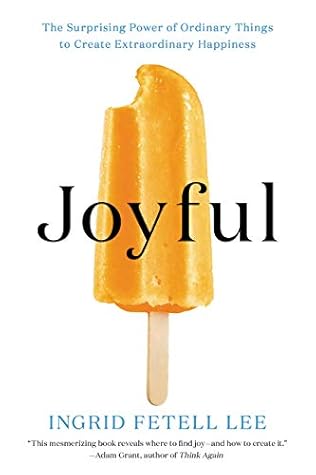More on this book
Community
Kindle Notes & Highlights
Read between
November 19, 2018 - March 16, 2019
What are your “happy places”? Are any within ten miles of your home? When was the last time you visited one?
Every human being is born with the capacity for joy, and like the pilot light in your stove, it still burns within you even if you haven’t switched on the burners in a while.
Hedley & Bennett.
Stories like this make me think that while technology has moved our health and well-being immeasurably forward, it has also robbed us of a wisdom that existed when our relationship to our environment wasn’t mediated by so many dials and controls. Instead of starting a fire or opening a window, we tweak the knob on the thermostat. Instead of eating a medicinal plant, we swallow a pill. We have gained convenience and efficacy, but at the cost of abstraction: the changes within our bodies no longer seem connected to the world around us, giving us the illusion that we are independent of our
...more
“People don’t know they should be looking for three thousand degrees Kelvin, or what we call warm light,
Choosing bulbs with a CRI close to 100 will keep you and your spaces looking bright and colorful.
less. That’s because abundance isn’t about just accumulating things. It’s about surrounding yourself with a rich palette of textures that enliven your senses.
wonder how many of us keep the reins a little short on our desires, how much we second-guess and censor ourselves.
We are here, as Diane Ackerman writes, to live not just the length of our lives, but the width of them as well. We are here to see rainbows and paint them, to be tickled and enthralled, to eat a second cupcake if we choose. And, occasionally, to feel the truth of Mae West’s famous aphorism, that “too much of a good thing can be wonderful.”
We fight so hard for freedom because it enables us to pursue joy—as well as everything else that matters in life.
research shows that people across cultures have an affinity for savanna-like landscape characteristics, such as deep sight lines, a view of the horizon, and a lack of understory vegetation that blocks movement and visibility. Studies by biologist Gordon Orians and environmental psychologist Judith Heerwagen also reveal a cross-cultural preference for trees that look like the acacias that flourish on a healthy savanna, with spreading, umbrellalike canopies and trunks that fork near the ground.
One possible reason is that spending time in nature decreases blood flow to a part of the brain called the subgenual prefrontal cortex, which is associated with the tendency to brood over problems. Natural settings literally make us more carefree.
essential oils from the hinoki cypress,
No matter how domesticated we have become, we all have a wild soul that beats and breathes under layers of clothing and responsibility. The question is, how do we let it out?
Though we rarely think about it, the
“Attention is the beginning of devotion.” The moment that something captures our attention, we cease to become detached from it.
While good taste wants things to be simple and normal, joy thrives out on the edges of the bell curve.
Synchrony shifts our focus away from our own needs toward the needs of the group.
Finding happiness isn’t a matter of creating a perfectly even-keeled experience of the world, where no sadness ever intrudes.
Instead it means riding the waves of joy, and trying to find our way back upward when we’ve been knocked down.
Even the smallest efforts—a painted mural, a knit cozy around a parking meter, a single flower—can be the beginning of an upward spiral that changes a community, a neighborhood, a life. To fix the world is a tall order, but to renew it is not nearly so daunting. The lesson of renewal is that from small seeds big things grow. And though I never would have suspected it eight years ago when I started writing this book, it’s not far-fetched to believe that from the seeds of our own joy, a whole world can be reborn.


